A Medieval Nottingham alabaster relief carved rectangular panel depicting 'The Assumption of the Virgin'Late 15th century The crowned Virgin clad in a draped robe and cloak, her hands open and slightly raised, standing within a mandorla flanked to the sides by a series of figures, angels to the upper half and saints to the lower, God the father looking down from above, the panel with traces of possibly refreshed polychrome and gilding, mounted on a later metal plate fixing, the panel, 40cm high x 25.5cm wideFootnotesProvenance The collection of Sir Michael and Lady Oppenheimer DD (3rd Baronet, British, 1924-2020), Jersey, thence by family descent. Sir Michael Oppenheimer's maternal grandparents were Sir Robert Grenville Harvey, 2nd Baronet (1856-1931) and Lady Emily Blanche Harvey (1872-1935) of Langley Park, Buckinghamshire which was the Harvey Baronet's main family seat from 1788 until 1945. Sir Michael's paternal family wealth was derived from mining interests in South Africa and his father Bernard Oppenheimer, as Chairman of the South African Diamond Corporation, received a baronetcy from George V in 1921 for setting up diamond sorting factories to employ wounded ex-servicemen after the First World War. The Oppenheimer family was involved with the prestigious De Beers brand over the subsequent decades of the 20th century and Lady Oppenheimer DD (1926-2022) was a distinguished moral and philosophical theologian, with a particular interest in the ethics pertaining to personal relationships. From the late 1300s up until the Reformation alabaster carving was a major production in the Midlands -specifically in Nottingham. Altarpieces and smaller panels were produced for the market at home, but a great number were exported -there are even some surviving examples in Iceland. They were usually painted and gilded and had a distinctive iconographic style. During the Reformation such works were hidden in England or completely destroyed. It is largely thanks to the preserved European examples that historians and academics have able to uncover the history behind these fascinating objects Two comparables of similar panels depicting 'The Assumption of the Virgin are illustrated in Francis Cheetham's 2005 catalogue of 'English Medieval Alabasters' at the Victorian & Albert Museum. One panel is illustrated within the Swansea altarpiece in the collection of the museum. The altarpiece, a rare survivor of a Medieval English carved alabaster and painted and carved wood multi-panelled church or chapel altarpiece was given by Lord Swansea. The panel featuring the Virgin within a similar mandorla arch differs in that it lacks the head of God the Father looking down on the scene. The second comparable panel, the gift of Sir Wilmot Herringham, depicts the Virgin again standing in a mandorla with the head of God the Father looking down from above, but to the left of the Virgin and with a kneeling figure of St Thomas who holds up the Virgin's belt with buckle and clasp similar to the present lot. This panel is also very similar to another example of the subject in Seville in the Museuo Provincial de Bellas Artes. In Cheetham's 2001 book, 'Alabaster Images of Medieval England', a further closely related 'Assumption of the Virgin' is illustrated therein. This particular panel features the Virgin wearing a fillet on her head with God the Father holding an orb above. Also, just as on the offered lot, it has a greater degree of polychrome colouring to the surface including a similar triangular border pattern to the mandorla. It is interesting to note that there are also some examples of both the two scenes of 'The Assumption of the Virgin' and 'The Coronation of the Virgin' being depicting together within one field. Comparable Literature F. W. Cheetham 'English Medieval Alabasters, A Catalogue of the Collection in the Victoria and Albert Museum', Boydell Press, 2005. F.W. Cheetham, 'Alabaster Images of Medieval England', Gli Ori, 2001.
A Medieval Nottingham alabaster relief carved rectangular panel depicting 'The Assumption of the Virgin'Late 15th century The crowned Virgin clad in a draped robe and cloak, her hands open and slightly raised, standing within a mandorla flanked to the sides by a series of figures, angels to the upper half and saints to the lower, God the father looking down from above, the panel with traces of possibly refreshed polychrome and gilding, mounted on a later metal plate fixing, the panel, 40cm high x 25.5cm wideFootnotesProvenance The collection of Sir Michael and Lady Oppenheimer DD (3rd Baronet, British, 1924-2020), Jersey, thence by family descent. Sir Michael Oppenheimer's maternal grandparents were Sir Robert Grenville Harvey, 2nd Baronet (1856-1931) and Lady Emily Blanche Harvey (1872-1935) of Langley Park, Buckinghamshire which was the Harvey Baronet's main family seat from 1788 until 1945. Sir Michael's paternal family wealth was derived from mining interests in South Africa and his father Bernard Oppenheimer, as Chairman of the South African Diamond Corporation, received a baronetcy from George V in 1921 for setting up diamond sorting factories to employ wounded ex-servicemen after the First World War. The Oppenheimer family was involved with the prestigious De Beers brand over the subsequent decades of the 20th century and Lady Oppenheimer DD (1926-2022) was a distinguished moral and philosophical theologian, with a particular interest in the ethics pertaining to personal relationships. From the late 1300s up until the Reformation alabaster carving was a major production in the Midlands -specifically in Nottingham. Altarpieces and smaller panels were produced for the market at home, but a great number were exported -there are even some surviving examples in Iceland. They were usually painted and gilded and had a distinctive iconographic style. During the Reformation such works were hidden in England or completely destroyed. It is largely thanks to the preserved European examples that historians and academics have able to uncover the history behind these fascinating objects Two comparables of similar panels depicting 'The Assumption of the Virgin are illustrated in Francis Cheetham's 2005 catalogue of 'English Medieval Alabasters' at the Victorian & Albert Museum. One panel is illustrated within the Swansea altarpiece in the collection of the museum. The altarpiece, a rare survivor of a Medieval English carved alabaster and painted and carved wood multi-panelled church or chapel altarpiece was given by Lord Swansea. The panel featuring the Virgin within a similar mandorla arch differs in that it lacks the head of God the Father looking down on the scene. The second comparable panel, the gift of Sir Wilmot Herringham, depicts the Virgin again standing in a mandorla with the head of God the Father looking down from above, but to the left of the Virgin and with a kneeling figure of St Thomas who holds up the Virgin's belt with buckle and clasp similar to the present lot. This panel is also very similar to another example of the subject in Seville in the Museuo Provincial de Bellas Artes. In Cheetham's 2001 book, 'Alabaster Images of Medieval England', a further closely related 'Assumption of the Virgin' is illustrated therein. This particular panel features the Virgin wearing a fillet on her head with God the Father holding an orb above. Also, just as on the offered lot, it has a greater degree of polychrome colouring to the surface including a similar triangular border pattern to the mandorla. It is interesting to note that there are also some examples of both the two scenes of 'The Assumption of the Virgin' and 'The Coronation of the Virgin' being depicting together within one field. Comparable Literature F. W. Cheetham 'English Medieval Alabasters, A Catalogue of the Collection in the Victoria and Albert Museum', Boydell Press, 2005. F.W. Cheetham, 'Alabaster Images of Medieval England', Gli Ori, 2001.
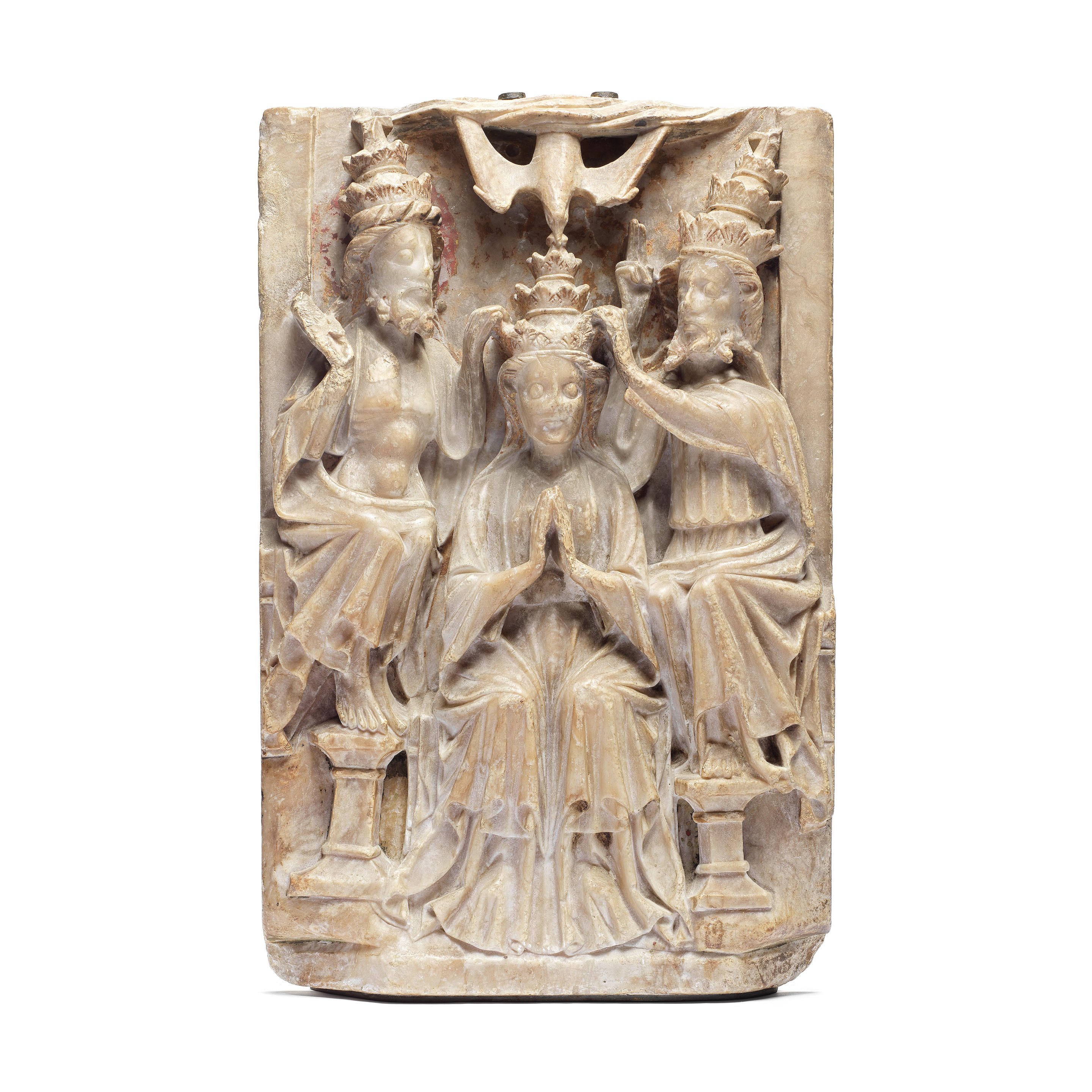

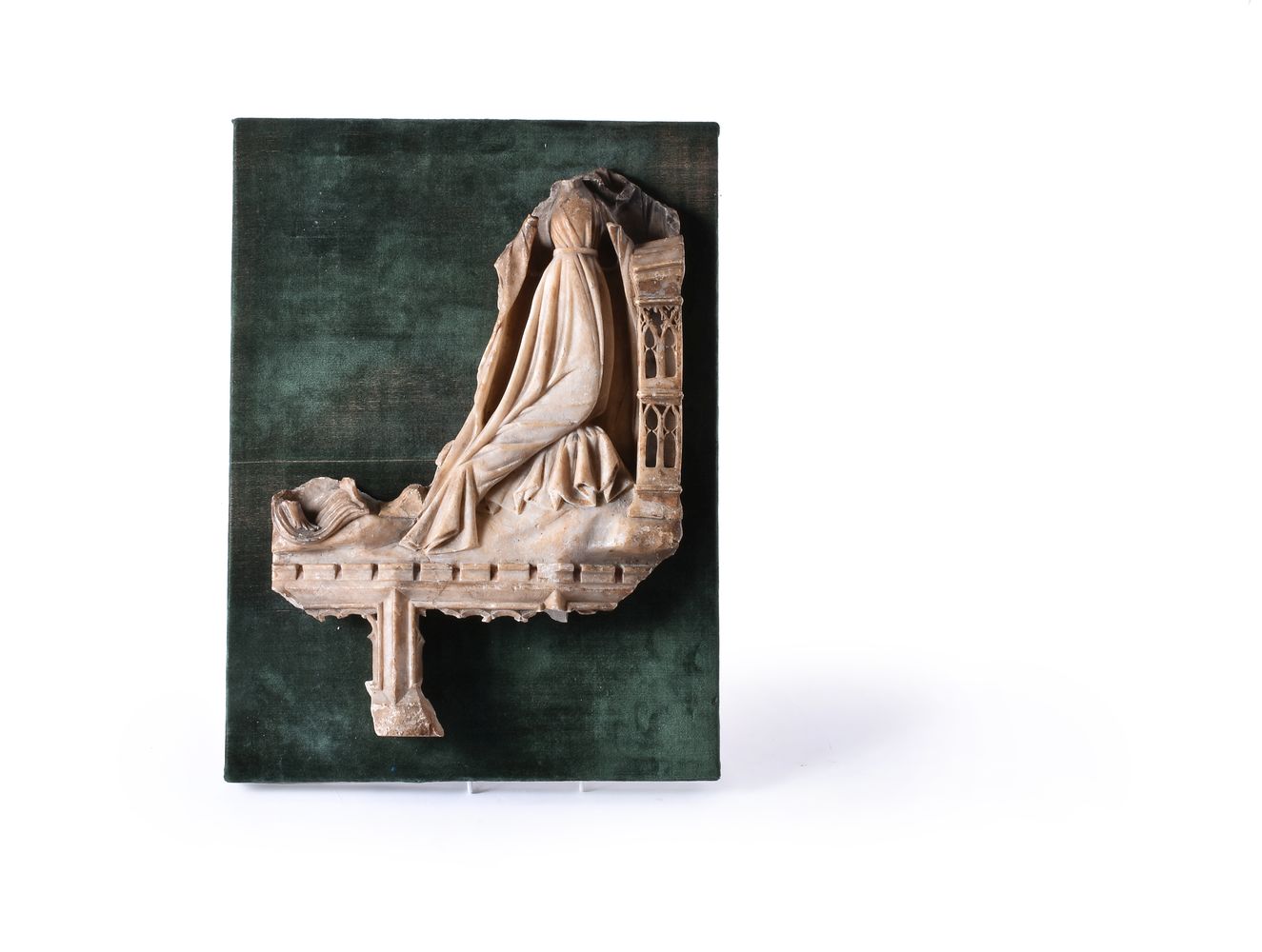
.jpg)
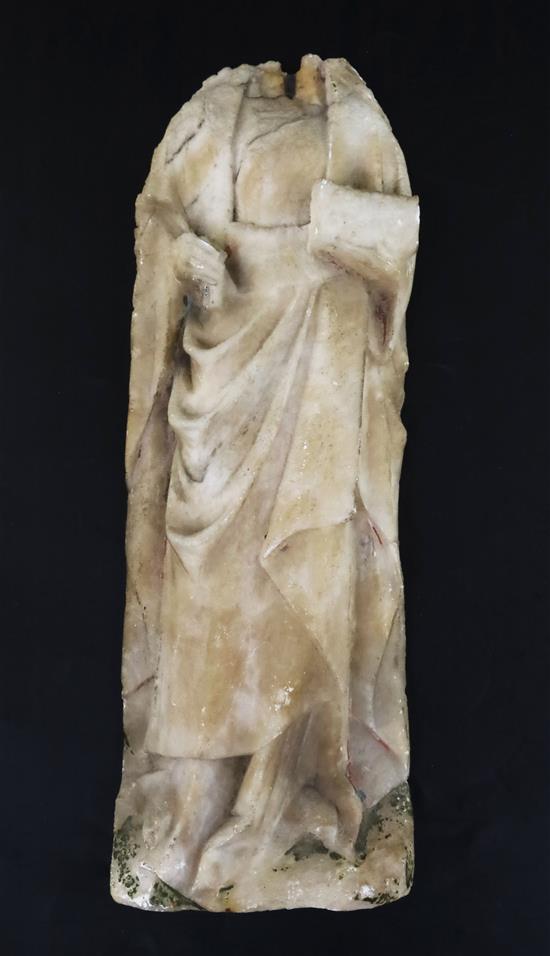


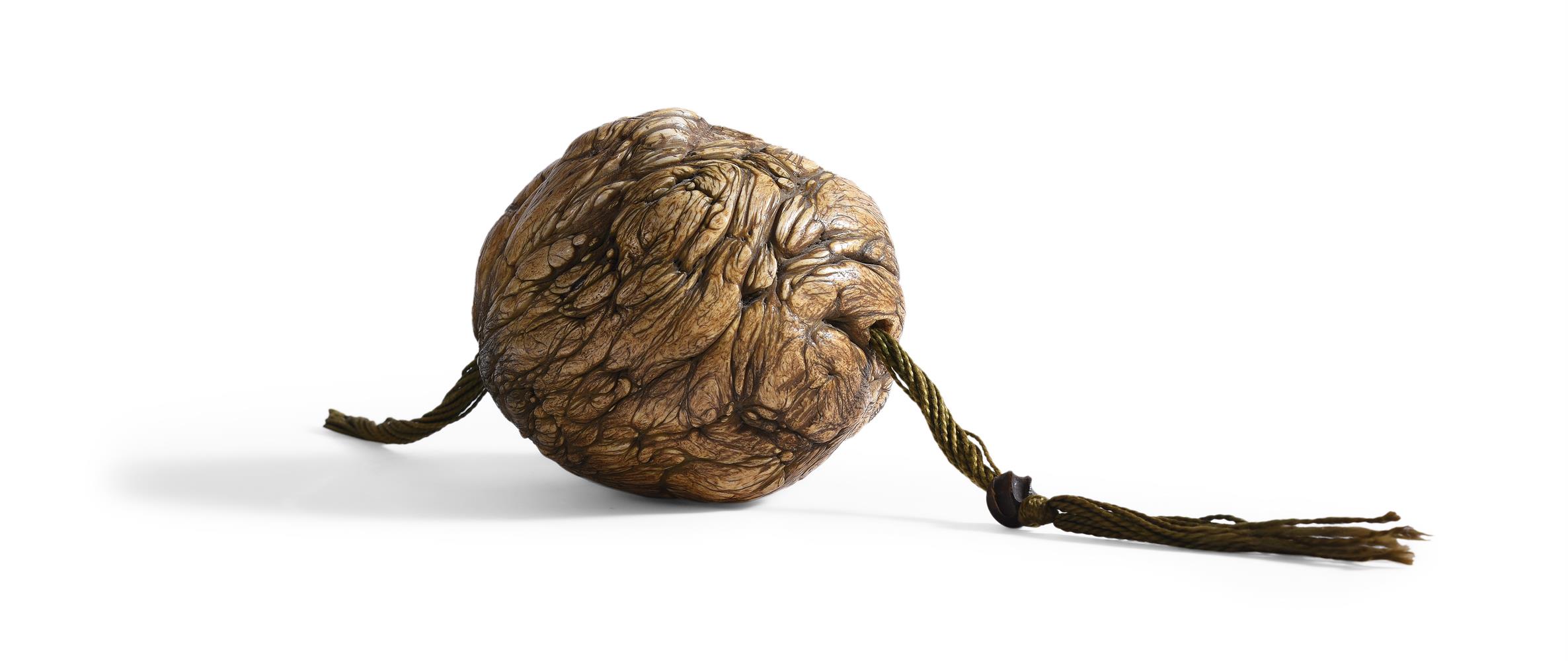



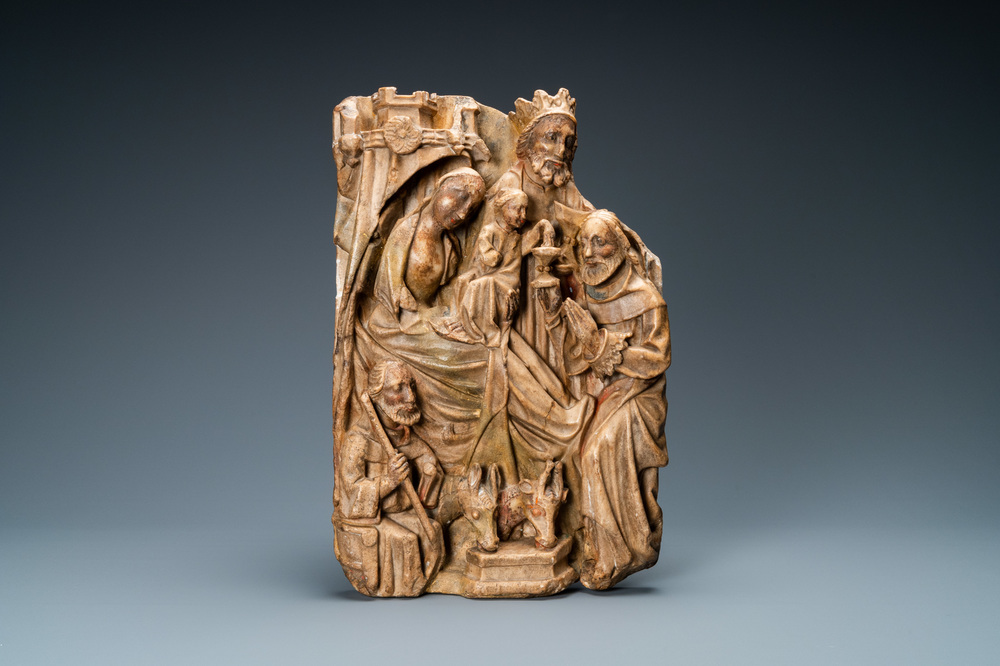
Testen Sie LotSearch und seine Premium-Features 7 Tage - ohne Kosten!
Lassen Sie sich automatisch über neue Objekte in kommenden Auktionen benachrichtigen.
Suchauftrag anlegen